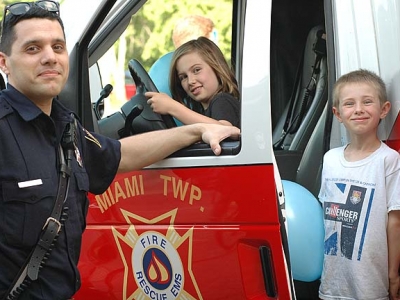Council is the public’s forum
- Published: December 6, 2012
A small village with an active citizenry and lots of public services makes for a busy Village Council. To alleviate some of the burden and engage the expertise of a talented populace, Council has historically relied on commissions to vet ideas and research policies before making an official decision on a given issue.
When the Village was considering whether to commit to a new $3.5 million electric substation in 2007, for instance, Council’s Electric System Task Force researched the issue and recommended that the Village turn down the proposal. Council held public discussion and voted not to build it. And in 2010, when Council was trying to figure out what it could do to support the local economy, the Economic Sustainability Commission was formed to vet and propose a plan for economic sustainability. Again after public discussions about the matter, Council approved the plan.
But over the years, the number of Council commissions has grown to 14, many of which haven’t been active for several years. Even some of the active groups have trouble finding enough members and gathering a quorum to meet regularly. And while many commissions work in close connection with Village Council, some have occasionally strayed from Council’s guidance and become entrenched in their own purpose and findings. But as a Council commission, the groups should be an extension of Council, where the issues should always return for public discussions and vetting, Council members discussed at their regular meeting on Monday, Nov. 19.
“Once a committee does a ton of work in the name of Village Council, the ability for us to say we don’t like it becomes eroded,” Village Council President Judith Hempfling said during the meeting. “I like the way we do the commissions because citizens know ‘this is the one place I can go to weigh in on public decisions.’ As the representative of the citizens, if it comes to us [for final approval] totally digested, the meaningfulness of public meetings and the public process has been undermined…Our debates and conversations with citizens is our job.”
The multiple interpretations villagers have about the purpose of Council commissions became apparent last month when Council began to draft an art policy for public spaces. A group of citizens proposed to help Council do the job by becoming a commission and broadening the scope of the policy to include all activity in public spaces. But the discussion got off track because Council hadn’t wanted to broaden the scope. And while Council is still considering creating a public art commission, Council members were clear at Monday’s meeting that the art commission’s job would be to consider proposals at the early concept phase and then pass them forward with the research to Council, where they would be publicly discussed.
“When the conceptual plan comes to Village Council, I see the commission as part of the discussion, but here [at Council] is for the public discussion,” Hempfling said. “We want the committee here to hear the concept plan, but not [the final] recommendation, because we need that broader look. To me, the broader interests would be better represented here at Village Council.”
Council member Karen Wintrow agreed about the purpose of the art commission, linking it to the need to review all the Council commissions. The current concerns include decreased participation/activity on commissions, maintaining transparency, aligning commission work to Council goals, and understanding the impact of commission work on Village staff and finances.
“We should discuss what they do, how they relate to Village Council, their adherence to public minutes law and public meetings, the ordinance that directs what their work is…” Wintrow said.
And regarding transparency, Wintrow echoed Council’s intent to have Council be the place for public vetting.
“Some citizens may have this feeling they shouldn’t have to come to meetings to know what’s happening. But decisions are made at Village Council, not so much at commissions,” Wintrow said.
And Council also needs a process by which commissions can go dormant if there is no current need for their service, Hempfling said.
“Council at some point established all of these commissions for a reason,” she said, referring for example to the electric system task force, created to review the option for a new substation.
“That committee then folded,” Hempfling said. Likewise, she said, other committees have become inactive. “Some haven’t functioned in years, like Design Advisory Commission, for example. Eliminating it makes sense to me.”
On the other hand, Human Relations Commission formed for different reasons and “has continued to do good work” Hempfling said.
Council’s current and active commissions include Planning Commission (which also manages the Bicycle Enhancement Committee and the Zoning Code Technical Review Committee), Board of Zoning Appeals, Human Relations Commission, Village Mediation Program and Board of Tax Appeals.
Commissions that are less active and need to be discussed include Environmental Commission, Economic Sustainability Commission, Economic Development Revolving Loan Fund Committee, Energy Board, Utility Dispute Resolution Board, Design Advisory Committee, Wellhead Protection Plan Management Committee, Community Access Panel, and Library Commission.
The Yellow Springs News encourages respectful discussion of this article.
You must login to post a comment.
Don't have a login? Register for a free YSNews.com account.
Parkinsons.jpg)














No comments yet for this article.